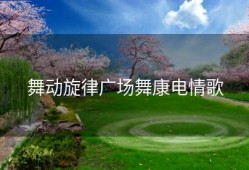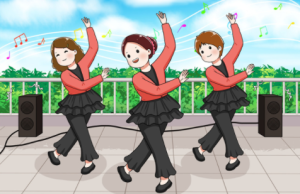The Charm of Square Dancing: A Harmony between Tradition and Modernity
- 广场舞百科
- 2024-03-30 03:18:22
- 43
Content:

Square dancing, as a traditional cultural activity in our country, have been gaining increasing popularity in recent years. It is not only a form of exercise, but also a symbol of social harmony and cultural heritage. However, the issue of whether square dancing should be forbidden has sparked a heated debate among the public. In this article, I would like to share my views on the current status of square dancing and why it should not be forbidden.
In recent years, square dancing has become an essential part of people's daily lives, especially for the elderly. Every morning and evening, you can see groups of dancers performing in parks, squares, and even residential communities. This phenomenon reflects the improving living standards and the increasing emphasis on health and leisure activities among the public. Square dancing provides an accessible and enjoyable way for people to keep fit and socialize with others.
Firstly, square dancing has numerous health benefits. It is a low-impact, whole-body exercise that can improve cardiovascular fitness, coordination, and balance. The rhythm and steps of square dancing can also enhance cognitive function and memory. Moreover, it promotes social interaction and a sense of community among participants, which is vital for the elderly to maintain mental health and combat loneliness.
Secondly, square dancing embodies the rich and diverse cultural heritage of our country. With various styles and regional characteristics, square dances reflect the historical and folk traditions of different ethnic groups. By preserving and promoting these cultural treasures, square dancing contributes to the inheritance and development of our national culture.
However, the popularity of square dancing has also brought some issues, such as noise pollution and the occupation of public spaces. It is true that the loud music and large crowds can disturb the residents living nearby. To address this problem, it is crucial to establish regulations and guidelines for square dancing activities. For example, setting specific time periods and volume limits for playing music, and designating certain areas for dancing can help minimize the impact on the surrounding community.
Moreover, the negative views towards square dancing mainly stem from the lack of understanding and communication. Some people may perceive it as a nuisance without realizing its cultural and health benefits. Therefore, it is essential to enhance public awareness and education about square dancing, highlighting its positive aspects and promoting tolerance and respect among different groups of people.
In conclusion, square dancing should not be forbidden, but rather supported and regulated. Its benefits to physical and mental health, as well as its role in preserving our cultural heritage, far outweigh the negative aspects. By implementing proper management and fostering a harmonious relationship between square dancers and the community, we can ensure that square dancing continues to thrive as a vibrant and inclusive social activity.
In the future, square dancing can also evolve and adapt to the changing times. Incorporating modern elements and innovative choreography can attract more young people to participate, making it a bridge between different generations. By embracing both tradition and modernity, square dancing will continue to enrich our cultural life and contribute to the construction of a harmonious society.
免责声明:本网站上的所有文章内容均来自互联网。本网站仅在法律允许的范围内使用、分享和传播这些内容,不违反任何版权或知识产权法。如发现本站有涉嫌抄袭侵权/违法违规的内容,请发送邮件25538@qq.com举报,一经查实,本站将立刻删除。
本文链接:https://zhuangrou.com/gcw/2263.html



















